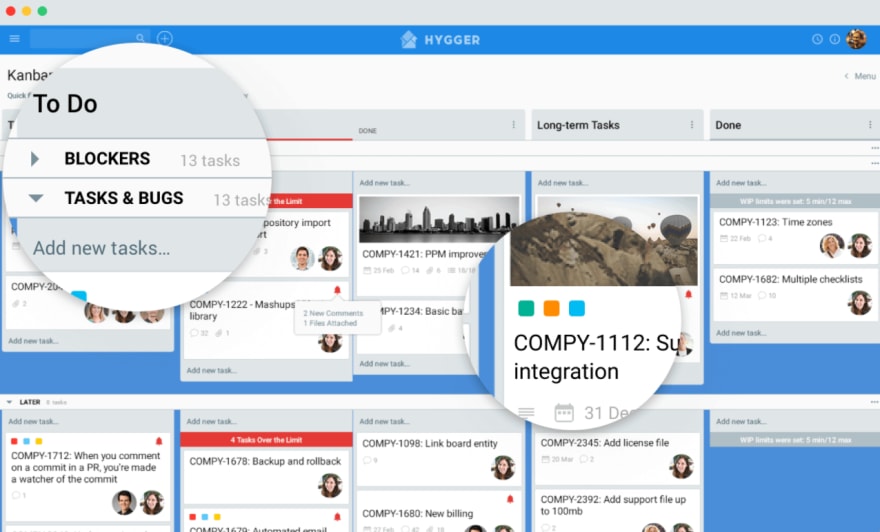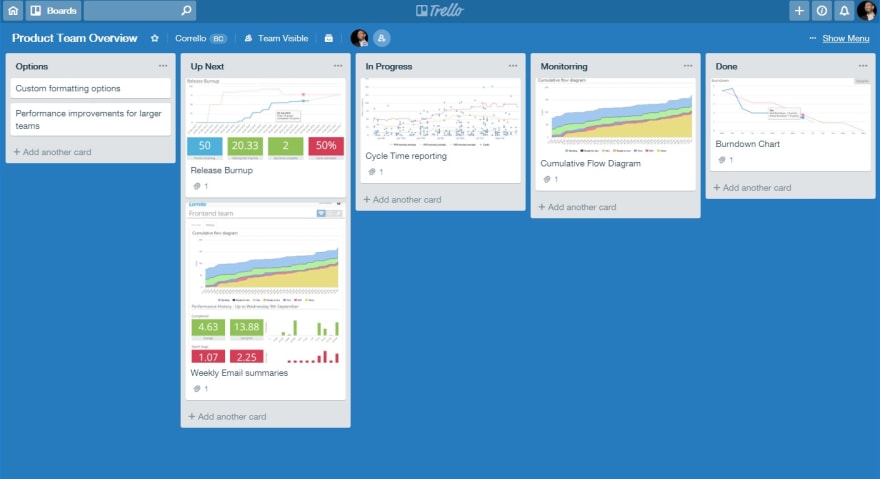Kanban is a work management method aimed to provide real-time updates on the status of current tasks. The concept was invented by a Toyota employee. He wanted to eliminate bottlenecks in workflow while providing a view of current work in progress and projects.
Nowadays this is one of the most popular systems for Agile project management. Kanban boards can really improve workflows and lead to increased productivity. Let's define the most obvious reasons for Kanban’s popularity and predict the nearest future for the method and Kanban-focused tools.
What are the reasons to use Kanban for project management issues in 2021?
1. Flexible release time
Some other Agile methodologies such as Scrum or XP do not allow releasing in the middle of an iteration. Applying Kanban, you can release anytime. You are able to release a user story when it is ready.
It is not easy to set up the development process this way. You will have to merge, integrate, and test often. However, you will have a chance to release often. Of course, you will need to have a powerful automated test suite. Otherwise, you won't make small releases with good quality.
2. Priorities changing
Scrum management typically means that you can not add stories into a sprint on the fly or this will be a complex process. That is why developers often resist replacing a story from a sprint backlog. When new stories are discussed in a hurry, some details may be missed. As a result, essential re-work will be required.
Kanban allows for changing priorities. In case you have an urgent request to implement a new user story, you can just place it on top of the queue. When a free slot is available, it will be taken.
3. No need for iterations
Iterations are aimed to help in revealing real problems in the development process. They also assist in establishing a project rhythm and rituals. However, at some point in the project, they may seem useless.
Your backlog may be fuzzy and plans may often change. This is where iterations are not helpful anymore. No iterations mean no iteration demo meetings. Instead, you can run quick just-in-time meetings before starting the development for each user story. Kanban sets a more complex rhythm and it may take time for developers to recognize it.
4. No need for estimates
Estimates are needed to predict how many stories you may take in the next iteration. Product owners also want to know how big the user story is. If the story is big, it may be moved to the next release.
Logically, iterative development is hardly possible without estimates. However, it is possible to live without them or practice very rough estimates. For Kanban-focused teams, it is more important to have a prioritized backlog and take the most critical user story and implement it.
5. Excellent flow visualization
Kanban method includes applying robust Kanban boards. They provide a clear and cozy view of current work in progress. The boards visualize the flow and enable fast planning and tracking. This characteristic makes Kanban boards especially promising for project management in 2021. Therefore, we would like to dwell on them in more detail.
The Power of Kanban Boards
What are Kanban boards?
A Kanban board is a tool that aims to visualize the flow of work and enable a team to manage its processes. It includes two main components: workflow and Kanban cards.
Workflow represents the process steps a task has to go through in order for it to be completed. The workflow is depicted in a Kanban board through columns and swimlanes.
A Kanban card represents the task a team will work on. All cards should flow through the columns and swimlanes, allowing teams to know the status of their work.
A typical Kanban board has at least three columns – To Do, In Progress, and Done.
What are the benefits of Kanban tools?
Kanban software platforms offer unique benefits that are often even better fit for Agile strategies than Scrum systems. Kanban boards provide more opportunities for a great collaboration. Any team member with permission to view and edit a board can add comments, files, update statuses, or create additional to-do lists.
Kanban boards perfectly suit the teams that need to carefully monitor individual task progress within larger overall progress. Online boards also help to pinpoint roadblocks, set more accurate deadline estimates to customers, and prevent people from getting overburdened.
Kanban tools keep pace with the new era of remote work
Remote work is becoming the norm. Thanks to technology and the rise of the new generation of managers, remote work is embraced now more than ever. Additionally, we can not forget about the Coronavirus, that have added special popularity to distributed work.
This kind of work is an arrangement where employees do their job outside the traditional office environment.
A team must be equipped with powerful tools to perform their duties and collaborate. This is where Kanban board tools come to help. With their help, everyone in the team can know what’s being worked on and what task they should pick up next. Here you can explore some examples of beautiful Kanban board for remote teams:
Kanban board in Hygger
Kanban board in Trello
Kanban board in Hubstaff

The Kanban boards mentioned above allow for more efficient workflows and visual representations of tasks.
A smart online Kanban board is one of the key components of the Kanban method that will definitely be a trend in the upcoming New Year. Use Kanban boards to manage remote teams, track and analyze workflows, and get better accessibility.










Top comments (1)
Great post! If you are looking into Kanban, I would suggest also taking a look at the concept of Kanban swimlanes. A visual and easy way to categorize items on a busy Kanban board.